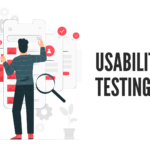Embracing Change and Finding the Right RMS Solution for your department’s Needs
The recent acquisition of Emergency Reporting by ESO has led many fire departments to reevaluate their Record Management System (RMS) options. As departments look for alternatives to Emergency Reporting, it is crucial to select an RMS that meets their unique needs and seamlessly integrates with existing systems.
One viable alternative is APX Data, a comprehensive RMS solution designed specifically for fire departments. This article will outline the key steps involved in transitioning to a new RMS and discuss how APX Data can serve as an effective solution for your department.
- Assess your department’s needs: Before embarking on the RMS transition process, it is vital to thoroughly assess your department’s specific requirements. This includes evaluating current processes, identifying areas of improvement, and establishing clear goals for the new RMS.
- Research available options: With a clear understanding of your department’s needs, explore the market for suitable RMS solutions. APX Data is a leading contender in this space, offering a robust set of features tailored to the unique demands of fire departments.
- Consult with stakeholders: Engage with key stakeholders, including firefighters, administrative staff, and IT personnel, to gather input on the preferred RMS solution. This will ensure buy-in from all parties and help to identify any potential roadblocks.
- Choose the right vendor: Carefully assess each RMS vendor’s capabilities, track record, and customer support offerings. APX Data stands out as a reputable provider with a strong commitment to customer satisfaction and ongoing support.
- Plan and implement the transition: Develop a detailed timeline and project plan for the RMS transition, including data migration, staff training, and system integration. Work closely with your chosen vendor, such as APX Data, to ensure a smooth and successful implementation.
- Monitor and evaluate progress: Continuously monitor the new RMS’s performance and solicit feedback from users to identify areas for improvement. Maintain an open line of communication with your vendor to address any issues that arise.
By following these steps and considering APX Data as an alternative to Emergency Reporting, fire departments can successfully transition to a new RMS that meets their specific needs and enhances operational efficiency.
ESO will speed up the standardization of information across its product ecosystem by pooling the resources, knowledge, and assets of the two organizations in order to give consumers and the industry a more in-depth understanding of emerging situations and opinions. All aspects of public health and safety will ultimately see quality and performance improvements as a result of this. Key personnel will be able to make the best choices for patient care, provider safety, operational effectiveness, and clinical improvement thanks to Emergency Reporting and ESO’s collective industry expertise, which will be made available to departments and agencies around the world.
Emergency Reporting, is a leader in the global market for online firefighting Monitoring software since its founding in 2003. In North America, the corporation provides services to more than seven thousand and five hundred fire and Rescue organizations. Additionally, Emergency Reporting has a significant national existence, supporting more than one hundred and seventy military and Department of Armed Forces installations globally. Medusa Medical Technologies was lately bought by Emergency Reporting and will be included in the ESO takeover.
Final words
This alternative option equip emergency personnel around the world with quick and simple equipment that provides them with all the necessary information to quickly respond in emergency conditions and save lives. Their records management and reporting technology serves as the integrated ecosystem that enables an organization’s complete operations.







